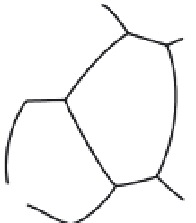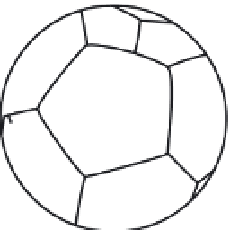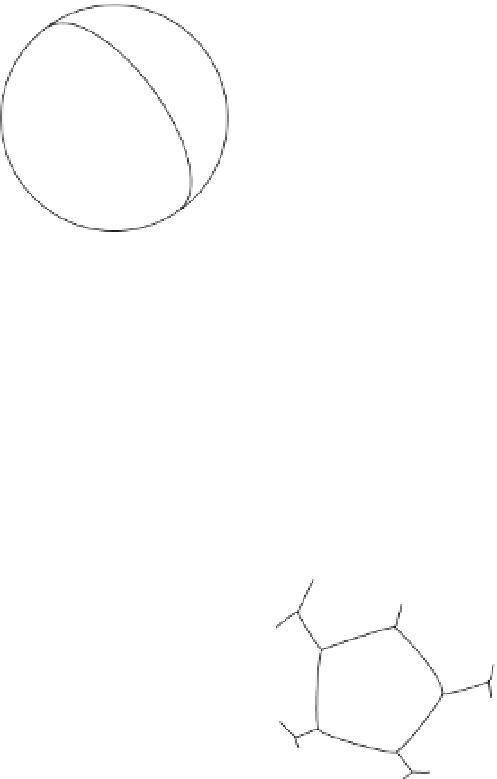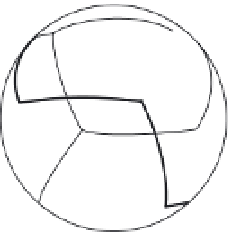Geoscience Reference
In-Depth Information
world, plates are not equal, in either size or con-
figuration. Most plates are not attached to slabs
and their freedom to move is constrained by the
surrounding plates.
Plate boundaries, such as ridges and trenches,
are not static and in fact, must move. The
whole global mosaic of plates periodically reorga-
nizes itself and new plate boundaries form while
others close up. In some sense, plates behave as
floating bubbles, or foams, constantly coalescing
and changing shapes and sizes. Islands of bubbles
may move coherently for a time, even though
they are far from rigid. Bubbles may even sup-
port small loads and deform locally as elastic
sheets.
Plate theory without physics
Nature tends to organize herself with little atten-
tion to the details of physics. Large interacting
systems tend to self-organize. Thus, mudcracks,
honeycombs, frozen ground, convection, basalt
columns, foams, fracture patterns in ceramic
glazes and other natural features exhibit simi-
lar hexagonal patterns. On curved surfaces there
are mixtures of pentagons and hexagons. In
many cases there is a
minimum
or
economy
prin-
ciple at work; minimum energy, area, stress,
perimeter, work and so on. Dynamic systems,
including plate tectonics, may involve dynamic
minimization principles such as least dissipa-
tion. Natural processes spontaneously seek a min-
imum of some kind. These minima may be local;
systems may jam before achieving a global min-
imum. Large complex interacting systems can
settle down into apparently simple patterns and
behavior.
On a homogenous sphere one expects that
surface tessellations
due to physical pro-
cesses will define a small number of identi-
cal or similar domains (e.g. an American soccer
ball or a European football). This will be true
whatever the organizing mechanism unless sym-
metry breaking and bimodal domains are essen-
tial for the operation of plate tectonics. There
areonlyafewwaystotessellateaspherewith
regular spherical polygons that fill space and
are bounded by geodesics and triple junctions.
Fig. 4.7
There are ten possible configurations of
great-circle arcs on a sphere that meet three at a time with
angles of 120
◦
. Six of these are shown here. Only five have
identical faces. These represent possible optimal shapes of
plates and plate boundaries. These figures have 2, 3, 4, 6, 10
and 12 faces or plates.
Whether the surface is subdivided into 'faces'
by deep mantle convection forces or by superfi-
cial (Platonic) forces, we expect the surface of a
homogenous sphere to exhibit a semi-regular pat-
tern, although this pattern will not be stable if
the triple junctions are not. Figure 4.7 illustrates
some of the ways to tessellate a sphere with great
circles and triple junctions.
In contrast to the beehive and other isoperi-
metric problems, and the bubble problems, we
do not know what is minimized, if anything,
in plate tectonics. It could be boundary or sur-
face energy, toroidal energy or dissipation. Nev-
ertheless, it may be fruitful to approach plate




















